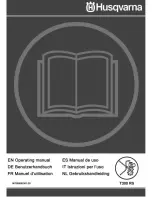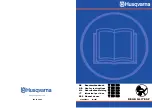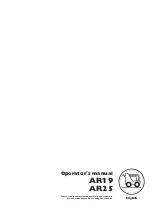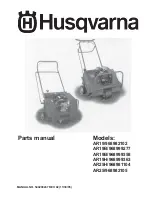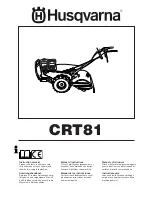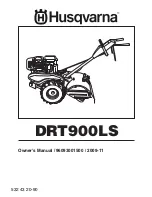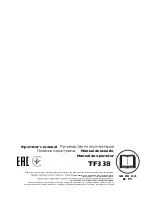
RLC-SVX023A
21
11
UNT-PRC002-GB
Sound power levels
Discharge
Measurement conditions:
Measurements taken in a room adjacent to the room containing the FWD, at the outlet of the rectangular duct (1.5 m
long) fixed to its discharge opening.
Fan
Power level in dB(A), per Hz frequency band
Overall power
Unit
speed
125
250
500
1000
2000
4000
8000
dB(A)
1
55
50
42
37
37
31
30
46
FWD 08
2
57
54
47
40
30
38
40
50
3
58
57
50
42
32
40
43
53
1
57
51
45
42
34
33
28
48
FWD 10
2
58
54
48
45
38
39
35
51
3
60
58
50
48
40
42
39
54
1
57
51
45
42
34
33
28
48
FWD 12
2
58
54
48
45
38
39
35
51
3
60
58
50
48
40
42
39
54
1
56
62
50
48
39
38
36
56
FWD 14
2
61
66
55
53
47
46
45
60
3
63
69
58
56
50
50
49
63
1
57
63
51
49
40
39
37
57
FWD 20
2
61
66
55
53
47
46
45
60
3
63
69
58
56
50
50
49
63
Intake
Measurement conditions:
Measurements taken at the horizontal air intake.
Fan
Power level in dB(A), per Hz frequency band
Overall power
Unit
speed
125
250
500
1000
2000
4000
8000
dB(A)
1
56
55
55
53
46
45
42
57
FWD 08
2
63
62
60
60
53
53
53
64
3
66
65
63
62
56
55
57
67
1
62
58
55
58
51
48
44
61
FWD 10
2
66
63
60
62
56
55
52
66
3
70
67
63
65
59
59
57
69
1
62
58
55
58
51
48
44
61
FWD 12
2
66
63
60
62
56
55
52
66
3
70
67
63
65
59
59
57
69
1
66
65
65
65
57
50
46
68
FWD 14
2
73
72
69
71
64
59
57
74
3
78
76
73
75
69
64
63
78
1
68
72
64
64
56
52
50
69
FWD 20
2
76
76
68
71
65
61
61
75
3
78
79
71
74
69
66
66
78
Installation - Electrical
General Recommendations
For proper electrical component operation, do not locate
the unit in areas exposed to dust, dirt, corrosive fumes,
or excessive humidity. If any of these conditions exist,
corrective action must be taken.
When reviewing this manual keep in mind:
• All field-installed wiring must be in accordance with
local regulations, CE directives and guidelines. Be sure
to satisfy proper equipment grounding requirements
according to CE.
• The following standardized values - Maximum Amps -
Short Circuit Amps - Starting Amps are displayed on
unit nameplate.
• All field-installed wiring must be checked for proper
terminations, and for possible shorts or grounds.
Note:
always refer to wiring diagrams shipped with
chiller or unit submittal for specific electrical schematic
and connection information.
Important:
to prevent control malfunctions, do not run
low voltage wiring (<30V) in conduit with conductors
carrying more than 30 volts.
WARNING! Hazardous Voltage with Capacitor!
Disconnect all electric power, including remote
disconnects and discharge all motor start/run and
AFD (Adaptive Frequency™ Drive) capacitors before
servicing. Follow proper lockout/tagout procedures to
ensure the power cannot be inadvertently energized.
• For variable frequency drives or other energy storing
components provided by Trane or others, refer to the
appropriate manufacturer’s literature for allowable
waiting periods for discharges capacitors. Verify with
an appropriate voltmeter that all capacitors have
discharged.
• DC bus capacitors retain hazardous voltages after input
power has been disconnected. Follow proper lockout/
tagout procedures to ensure the power cannot be
inadvertently energized.
After disconnecting input power, wait twenty (20) minutes
for units which are equipped with variable frequency drive
(0V DC) before touching any internal components.
Failure to follow these instructions could result in death
or serious injury.
For additional information regarding the safe discharge
of capacitors, see “Adaptive Frequency™ Drive (AFD3)
Capacitor Discharge”.
• However, for any intervention in the AFD, the indicated
time on the label of the AFD must be respected.
Before installing the chiller with AFD, the user must
evaluate the potential electromagnetic problems in the
surrounding area. The following should be considered:
a) the presence above , below and adjacent to the unit of
for example: welding equipment or other power cables,
control cables or signaling and telephone cables;
b) receivers and transmitters, radio and television;
c) computer and other control equipment ;
d) the critical safety equipment, eg protection of
industrial equipment ;
e) the health of neighboring persons, for example, use of
pacemakers or appliances against deafness ;
f) the immunity of other equipment in the environment.
The user must ensure that the other materials used
in the environment are compatible. This may require
additional protection measures ;
If electromagnetic disturbances are detected, it shall be
the responsibility of the user to resolve the situation.
In any case, the electromagnetic interferences have to be
reduced until they are no longer troublesome.
All wiring must comply with national electric regulations.
Minimum circuit ampacities and other unit electrical
data is on the unit nameplate. See the unit order
specifications for actual electrical data. Specific electrical
schematics and connection diagrams are shipped with
the unit.
Do not allow conduit to interfere with other components,
structural members or equipment. Control voltage
(110V) wiring in conduit must be separate from conduit
carrying low voltage (<30V) wiring. To prevent control
malfunctions, do not run low voltage wiring (<30V) in
conduit with conductors carrying more than 30V.


































